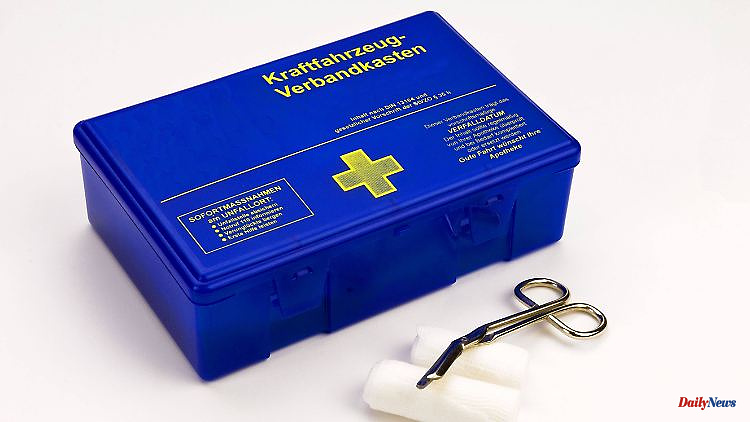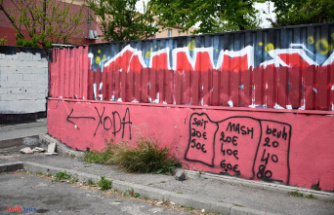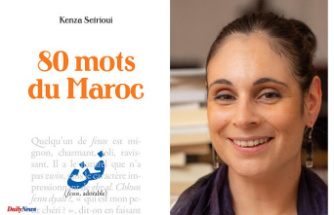Since Corona it has been clear: Face masks should protect against infection. They must therefore be included in new first-aid kits, and an updated standard now applies here. Do we all have to retrofit?
Providing first aid after accidents, treating minor injuries - for more than 50 years, every car has had to have a first-aid kit on board for something like this.
Its standardized and binding packing list was updated some time ago. What do drivers need to know about this? And how do you use the content of the "Auto-Apotheke" sensibly?
The DIN standard 13164 determines the contents of the first-aid kits. This was updated by the DIN committee at the beginning of 2022 and came into force in February 2023 after a transitional period. This is pointed out by the Federal Ministry for Digital and Transport (BMDV), the Auto Club Europa (ACE), the ADAC, Dekra and TÜV Thüringen.
According to the updated DIN 13164:2022, the first aid kits must now also contain two medical masks. These must at least correspond to type 1 (DIN EN 14683) - this is what surgical masks do, for example.
Two of the previously prescribed three triangular covers are no longer required - only one (DIN 13 168-D) is required. A bandage measuring 40 by 60 centimeters also fell off the list of contents.
While retailers have only been allowed to sell first-aid kits according to the new standard since the end of the transition period, there is currently no mandatory need for action for drivers. You can use a crate from the new standard (February 2022) or one from the old DIN standard.
Because as long as the relevant paragraph of the Road Traffic Licensing Regulations (STVZO) has not been amended accordingly, the previous standards anchored therein (DIN 13164, January 1998 and January 2014) continue to apply.
A corresponding adjustment of the paragraph is also not planned, a spokeswoman for the BMDV said on request. In addition, the introduction of a retrofitting obligation on the part of the Federal Ministry is not planned for reasons of sustainability.
However, traffic experts advise having sufficiently well-packaged masks on board for reasons of infection protection, even if there is no obligation to retrofit. And with mask prices sometimes below one euro, that's not a costly investment either. For this purpose, a hand disinfectant in the car makes sense, advises TÜV Thüringen, for example.
Regardless of the current update, the following still applies: The contents of the box must not have expired. Logically, this does not apply to parts such as scissors. But it applies to some sterile products, for example, which also have an expiry date on them. Expired items must be replaced.
"It is therefore important to check the durability of the components in your first aid kit at certain intervals," says ADAC spokesman Alexander Schnaars.
There are supplement sets for certain materials on the market. But even a completely new box doesn't cost the world and can be had for sums from around ten euros.
The exact form of the first aid kit remains undefined. For example, it can come in a box or as a pillow. But according to the StVZO, the following always applies: The material must be packed in a container that adequately protects the contents from "dust and moisture as well as fuel and lubricants".
By the way: Although you don't have to carry one with you on a motorcycle, a first-aid kit can also be useful here. Practical: There are extra small sets for bikes in specialist shops.
If a first-aid kit is missing, the driver risks a fine of at least five euros in a traffic stop. According to ACE, ten euros are due as the owner.
In addition, the main inspection (HU) checks whether there is a box in the car and whether its content is correct. The expiration date can also be checked. If the box is missing or is defective or incomplete, this can be reported as a minor defect, explains Dekra spokesman Wolfgang Sigloch.
It is true that minor defects do not mean that the badge is refused. But these too must be remedied immediately.
Basically, it is advisable to grab the box once in a quiet minute, open it and familiarize yourself with the contents. "It starts with the fact that I even know where it is stowed in the car," says ADAC spokesman Schnaars. It is best stored in an easily accessible place inside or in the trunk.
He also recommends a regular, voluntary refresher course on first-aid knowledge. "The handling of the material is also shown very specifically, for example when and how I apply a pressure bandage and when a band-aid is enough," he says. This could reduce insecurities and inhibitions in an emergency and strengthen the willingness to provide assistance.
Because that's generally important when it comes to first aid: "No one blames you if you can't do what a professional helper could do. But not helping is the wrong decision," says Schnaars.
The German Road Safety Council (DVR), for example, has summarized in short clips on Instagram how first-aiders can react and apply first aid at the scene of an accident.
That's in it: current contents of the car first aid kit
In detail, a box according to the new standard (DIN 13164, February 2022) contains:












